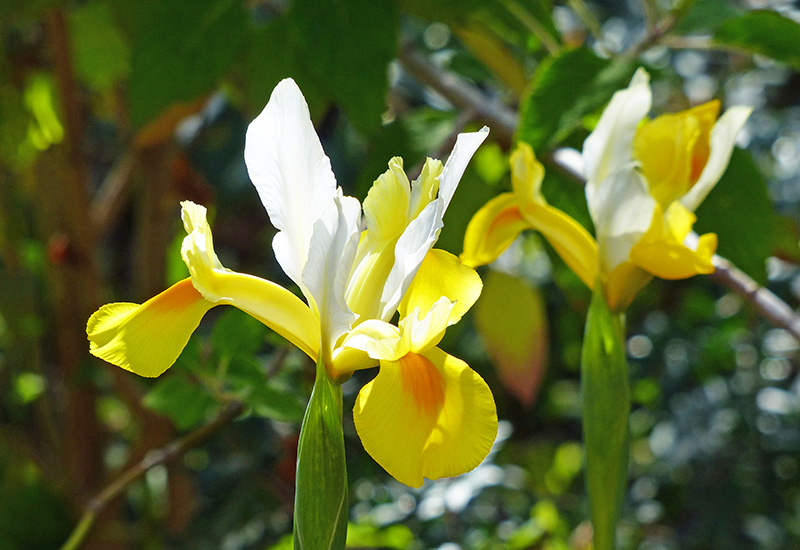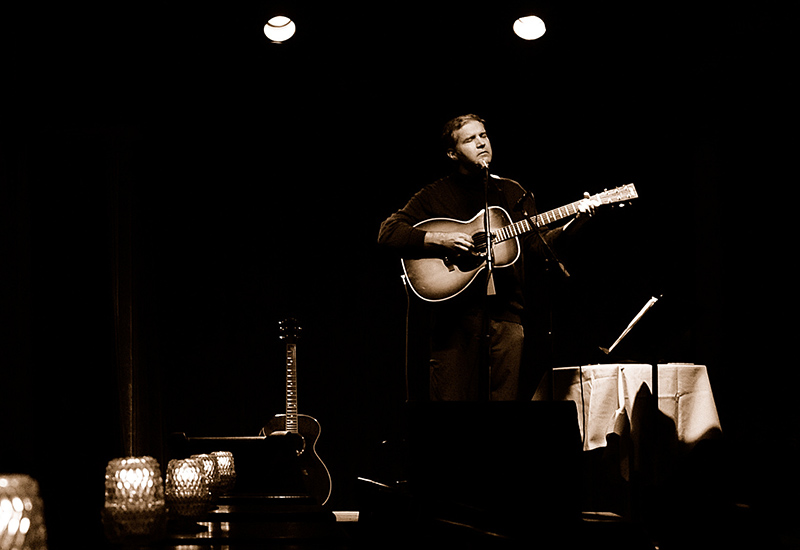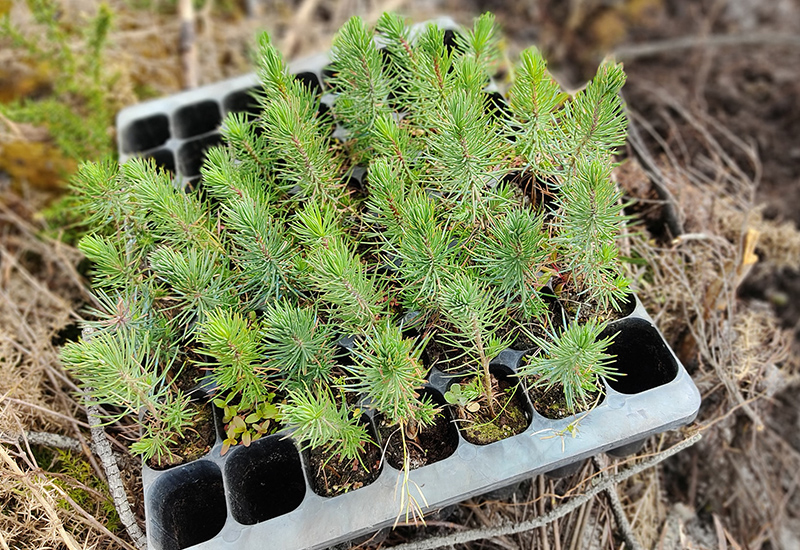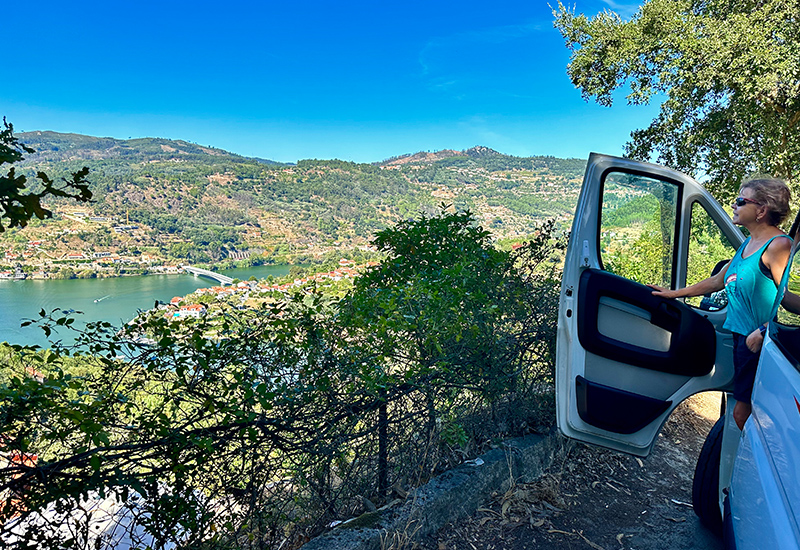Who doesn’t love irises with their showy, distinctive flowers and elegant sword-like foliage? I was, therefore, happy to see the iris was one of the first flowers to appear in my garden this spring.
The iris is named after the Greek goddess of the rainbow. It is suggested that this name was attributed due to the wide variety of colours found across the three hundred or so species. They are generally restricted to the northern hemisphere and mostly found in dry semi-desert habitats or colder rocky mountainous areas. The flowers are six-lobed with three sepals often drooping downwards, which are referred to as “falls”. The three petals are generally upright and are called “standards”. They are perennial plants that grow from either creeping rhizomes or, in drier climates, bulbs.
I’ve noticed that both in the UK and here in the Algarve, one of the first plants to flower in my garden is the Algerian iris (Iris unguicularis). It is a native of North Africa and the western Mediterranean and loves dry, poor soils which are baked in the hot summer sun. It forms a slightly untidy clump of tall grass-like foliage from which the blue to mauve, and even white, flowers emerge from December to February. A welcome sight when so little else is in bloom. You can get many shoots packed together in a large clump so that a large number of flowers may be produced over several months, making a spectacular sight. It resents root disturbance and may take several years to flower again if it is split up – the best time to do this is either in April after flowering has finished or just before the rains begin in the autumn.
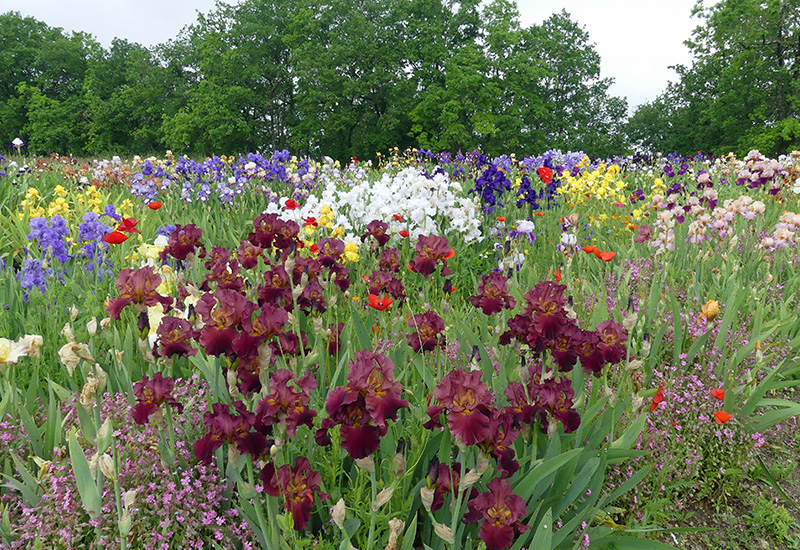
At the moment, I have several clumps of Dutch irises (I. x hollandica) coming into flower. It is actually a hybrid iris developed from species native to the Iberian Peninsula and North Africa in the nineteenth century. Since the 1900s, it has been crossed with other species resulting in many cultivars with a wide range of colours, from blues to yellows. I read recently that the bulbs should be treated as annuals, but my experience here is that they reliably come up year after year, even though I treat them cruelly with no irrigation and extremely poor soil.
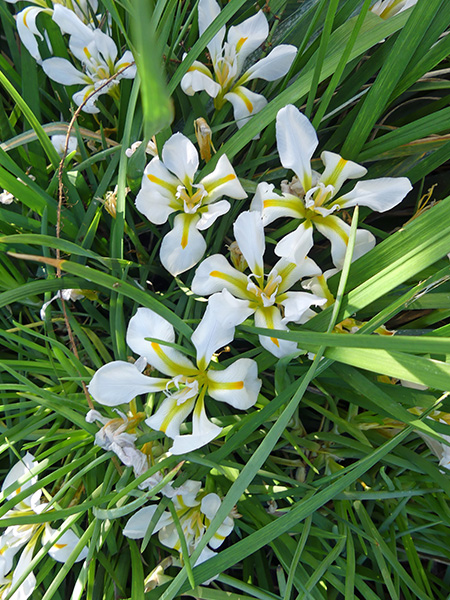
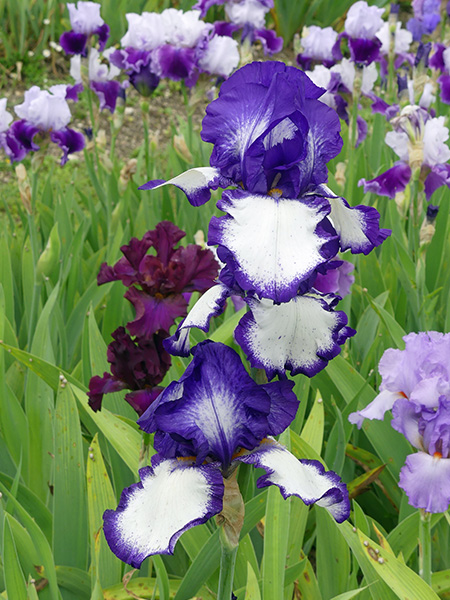
Last but by no means least, between April and May is the time to be bedazzled by the beautiful flowers of the bearded irises, which are, in my opinion, the most spectacular of the genus. They get their name from the rows of fuzzy hairs at the base of the fall petal, which are there to guide pollinators to the source of nectar. They come in a wide variety of colour combinations and sizes. They are easy to grow, long-lasting (up to twenty years), have a wide colour palette and are high impact. Probably the only downside is that the flowers don’t last for long, so I plant them in mixed beds to ensure there are other focal points when they are not flowering. They need a sunny south-facing spot in free-draining soil where they will be baked during the summer. They will require lifting and replanting every three to five years; otherwise, they become congested and stop flowering. You just lift the clump and keep the healthiest rhizomes, prune the leaves back by half and then rebury the rhizome taking care to ensure that half of it is exposed.
So, you might like to channel your inner goddess by planting some of these colourful delights in your garden this spring.
Tamsin Varley is a member of Clube Dos Bons Jardins. This small, friendly multi-national garden club meets at different locations around the Algarve on the 2nd Tuesday of every month except over the summer, with an optional lunch afterwards.
algarvecbj@hotmail.com
